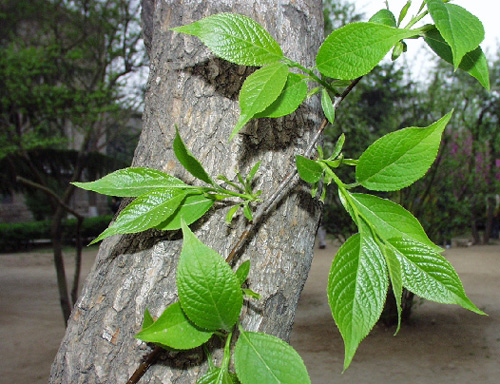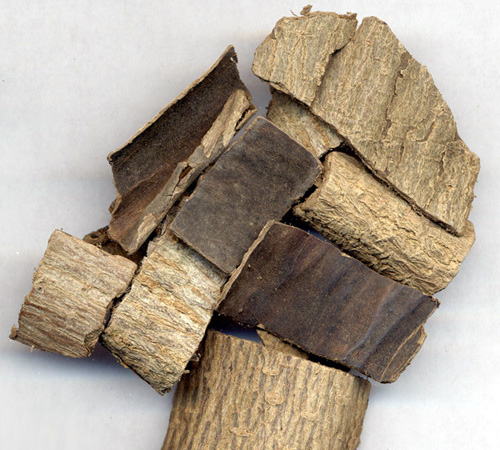The source is from the bark of Eucommia ulmoides Oliv., family Eucommiaceae. The medicinal material is produced in the areas of Sichuan, Yunnan, Guizhou, and Hubei, etc.. The tree is barked from April to May, and the bark is scraped and dried in the sun, then cut into segments and used crudely or stir-baked with a salt solution for medication.
Medicinal Properties: Sweet in flavor, warm in nature and attributive to the liver and kidney meridians.
Actions: Invigorate the liver and kidney, strengthen the tendons and bones, and soothe the fetus.

Application
1. It is indicated for deficiency of the liver and kidney manifested as cold sensation and soreness of the loins and knees, weakness of tendons and bones, and impotence and frequent micturition. For the former, it is usually used together with Buguzhi (Fructus Psoraleae ), etc., such as Qing'e Wan (Bolus) ; for the latter, used together with Shanzhuyu ( Fructus Corni), Tusizi ( Semen Cuscutae ) , and Fupenzi ( Fructus Rubi ) , etc.
2. For threatened abortion, vaginal bleeding or habitual miscarriage, it is usually combined with Xuduan (Radix Dipsaci ) and Zaorou ( Caro Jujube ), such as Duzhong Wan (Bolus), or combined with others that invigorate the kidney to arrest excessive menstruation, such as Tusizi ( Semen Cuscutae) and Ejiao ( Colla Corii Asini).
In addition, it can be used for hypertension which is accompanied by deficiency of the kidney, it can be combined with Juhua ( Flos Chrysanthemi), Niuxi ( Radix Achyranthis Bidentatae ) , and Xiakucao (Spica Prunellae ) , etc.
Usage and Dosage: 10 -15 g is used in decoction for oral use. The one stir-baked with salt water is more effective than the raw.








